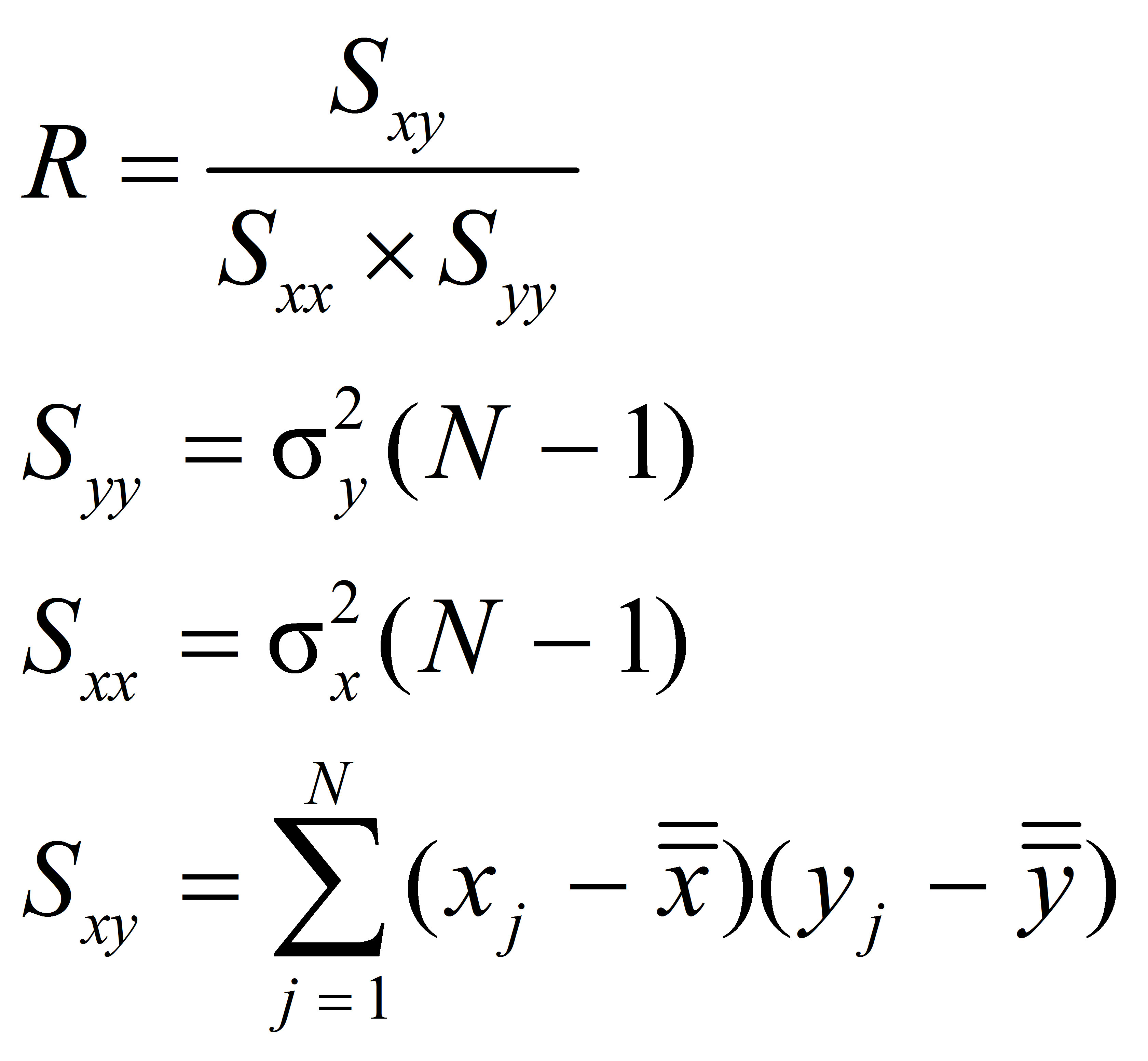Tools
ANOVA
Models
Regression by Backwards Elimination
Data Transforms
Transformations used in Regression
Correlation Coefficient R
This correlation coefficient calculation is a measure of how much linear relationship exists between the values for the two variables.
The correlation coefficient can range between +1 and -1.
Positive values indicate a relationship between X and Y variables so that as X increases so does Y.
Negative values mean the relationship between X and Y is such that as values for X increase, values for Y decrease.
A value near zero means that there is a random, nonlinear relationship between the two variables. Use the correlation coefficient calculation shown below.

where N is the total number of observations, ![]() and
and ![]() are the averages of x and y, respectively, and σx and σy are the sample sigma of the x and y values, respectively.
are the averages of x and y, respectively, and σx and σy are the sample sigma of the x and y values, respectively.
The square of the Correlation Coefficient R, referred to as the Coefficient of Determination (or sometimes just “R Squaredâ€), provides an estimate of the percentage of variation in the dependent variable accounted for by the regression function.
Learn more about the Regression tools in Six Sigma Demystified (2011, McGraw-Hill) by Paul Keller, in his online Regression short course (only $99), or his online Black Belt certification training course ($875).





